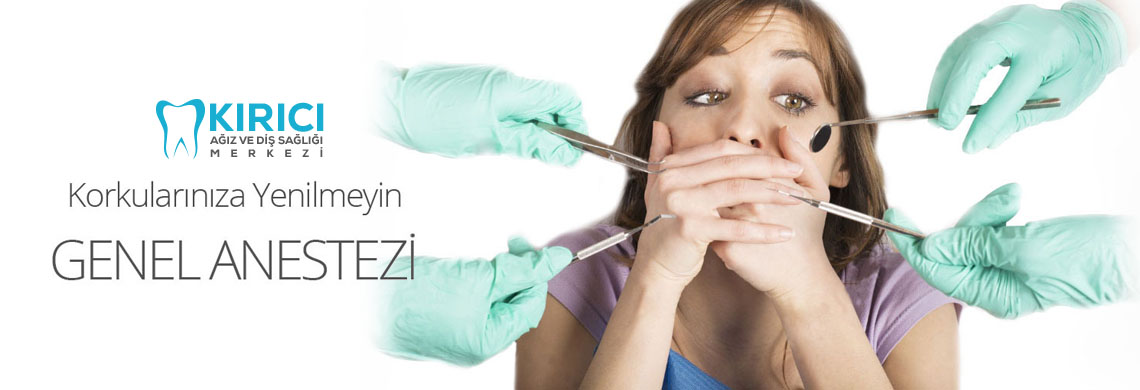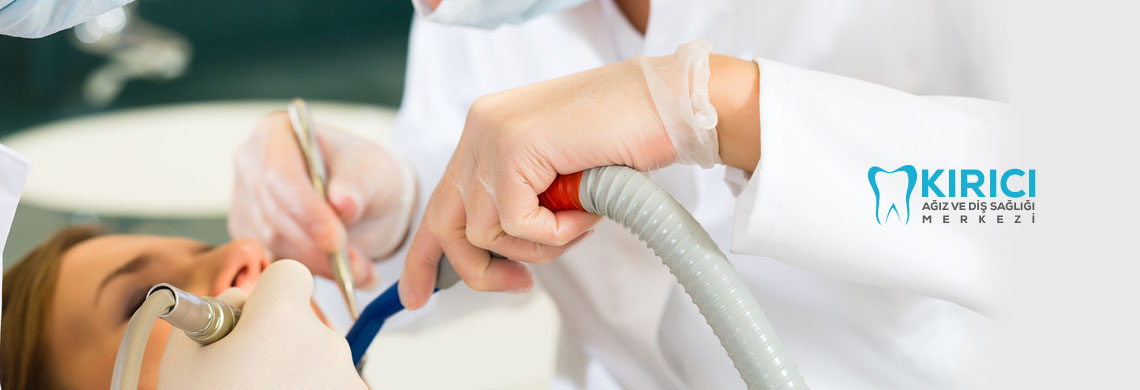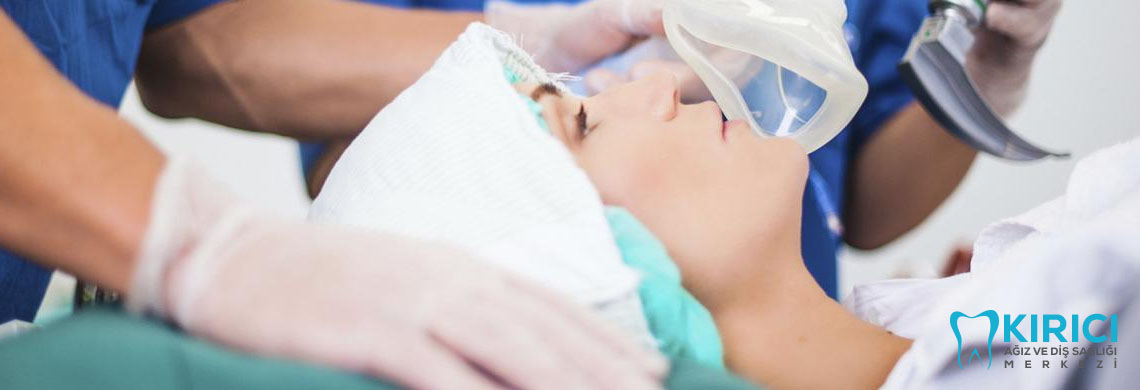General anesthesia is an anesthesia type in which the narcosis state is provided by giving intravenous drugs and anesthetic gas to the patient. And sedation is an anesthesia type in which half-sleep state is provided by giving only intravenous drugs to the patient. Sedation has no anesthetic effect. Therefore local anesthesia is also applied for the patients in order that surgical region can be under anesthesia. By evaluating the patient before the operation and by benefiting from the effects, interactions and excretion properties of the drugs used; the appropriate conditions should be provided to have an appropriate clinical effect on the patient and and for dental treatment. Pain and anxiety can be prevented by a team work. Anesthesia team serves as part of this unit.
This treatment is often preferred in fear and anxious patients, in mentally retarded people, in elderly patients (such as hypertension, diabetes) due to the accompanying diseases and in cases for which local anesthesia is insufficient (such as cyst on the chin, impacted tooth, dental implant operations, jaw fracture treatment). Dentist chair is a cause of fear and tension for many patients. So the physiological symptoms such as increasing or decreasing heart rate and sweating, vomiting, low blood pressure appear. For the patients in this stage; the treatment is either interrupted or done with difficulty and the patient will have a problem to sit on this chair again. In addition, the stress that children feel when coming to the dentist and dental intervention under inappropriate conditions affect them throughout their lives. These dental treatments cause to avoid the doctor and treatment throughout their lives and reduce the chance of early diagnosis and treatment for common malignant diseases in these days. Instead of forcing children to sit in this chair, It can be resolved with anesthesia support under reliable conditions.
All medical treatments have risks and side effects. Like general anesthesia; there are also risks arising from both incurable teeth and behaviors during dental treatment for a patient who does not want to be treated in the dental chair. It is important to follow the healthiest and least harmful method by taking all precautions for every treatment. As a result, the most appropriate treatment should be made by evaluating all risks in terms of mouth condition and general health.
Dental treatments under general anesthesia are made by dentists and a general anesthesiologist in a full-fledged hospital. All dental treatments are done using a specially manufactured mobile dental treatment unit for dental treatments under general anesthesia.
General anesthesia applications do not have any negative effects on dental treatment. Also It provides an advantage in terms of completely performing all treatments under general anesthesia, because patients who are afraid of dentist or needle avoid routine dental treatments.
General anesthesia can be made to the people without any chronic disease and to the people deemed as appropriate after the treatment by the anesthesiologist in terms of general anesthesia.
The processing time varies between 1-3 hours according to the transactions to be performed.
After the patients are awakened from general anesthesia; they are kept under control between a few hours and a day according to their situation and the procedures performed.



